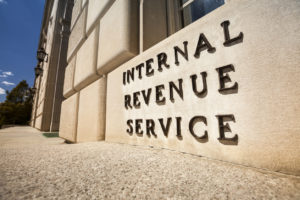Lawyers and clients have ample reasons to care about IRS Forms 1099, which allow computer matching of Social Security numbers and dollar amounts paid. In most cases, Forms 1099 report income, so if you receive a Form 1099, check the numbers. You may not be able to change it, but you’ll usually need to report it on your tax return.
Lawyers receive and send more Forms 1099 than most people, in part because of tax laws that single them out. Since 1997, most payments to lawyers must be reported on a Form 1099. The basic Form 1099 reporting rule (for lawyers and everyone else) is that each person engaged in business and making a payment of $600 or more for services must report it on a Form 1099. The rule is cumulative, so while one payment of $500 wouldn’t trigger the rule, two payments of $500 to a single payee during the year require a Form 1099 for the full $1,000.
Lawyers must issue Forms 1099 to expert witnesses, jury consultants, investigators, and co-counsel who received $600 or more. A notable exception to this $600 threshold rule is payments to corporations for services. However, the rule that payments to a lawyer require a Form 1099 overrides the rule that payments to a corporation are exempt. Any payment for services of $600 or more to a lawyer or law firm must be reported on a Form 1099. It doesn’t matter if the law firm is a corporation, limited liability company, limited liability partnership, or general partnership.
The size of the law firm also doesn’t matter; it might have one lawyer or thousands. This affects law firms as issuers, and as receivers, of Forms 1099. A lawyer or law firm paying fees to co-counsel or a referral fee to a lawyer must issue a Form 1099, regardless of how the lawyer or law firm is organized. Any client paying a law firm more than $600 in a year as part of the client’s business must issue a Form 1099.
Some businesses and law firms prefer to issue Forms 1099 at the time they issue checks, rather than in January of the following year. For example, if you are mailing out thousands of checks to class action recipients, you might prefer sending a single envelope that includes the check and Form 1099, rather than sending a check and later doing another mailing with a Form 1099.
Form 1099 Errors
Errors in reporting occur, and if you believe a Form 1099 is wrong, you may be able to get the issuer to correct or undo it.
Suppose that you receive a Form 1099 that says a company paid you $100,000, but you can prove that the company actually paid you only $10,000. If you cannot get the company to correct it, you must report the $100,000 and explain that you actually received only $10,000. Unfortunately, many “please fix my Form 1099” requests go ignored. The issuer of the form may believe it issued the form correctly, and many Form 1099 reporting issues that seem like errors really are not.
Say that a plaintiff nets $60,000 from a legal settlement when the lawyer collected $40,000, a 40 percent contingent fee. The plaintiff will usually receive a Form 1099 for the full $100,000, even if the lawyer was paid directly by the defendant and the plaintiff only received $60,000. Arguing about that after the fact is nearly always a waste of time. The only time you have any bargaining power about how Forms 1099 will be issued is before you sign a settlement agreement.
Failing to report (or at least explain) a Form 1099 on your tax return will get you an IRS notice. If you receive a Form 1099, report it, even if you are claiming that the money should be tax free. If you are a plaintiff or a lawyer, think about the forms before signing the settlement agreement. In some cases, you may be able to steer the defendant to completely avoid a Form 1099. That would be appropriate if a portion of a settlement is fairly attributable to physical injuries or physical sickness.
Form 1099-MISC vs. Form 1099-NEC
Even if it is certain that you will receive a Form 1099, there are different 1099s, and different boxes on the forms that signal different things to the IRS. The most common form is Form 1099-MISC, for miscellaneous income. But to discuss it, we must also talk about Form 1099-NEC.
Up until 2020, if you were paying an independent contractor, you reported it on Form 1099-MISC, in box 7, for non-employee compensation. But now, the old box 7 has morphed into its own form: Form 1099-NEC.
Form 1099-NEC reports a payment for services. Using that form tips the IRS off that the person should be paying not only income tax, but also self-employment tax. Self-employment tax is equivalent to both halves of the employer and employee payroll taxes that apply to wages, which are reported on Form W-2.
Self-employment tax can add a whopping 15.3 percent on top of income taxes. That 15.3 percent applies up to the wage base of $168,600, with 2.9 percent on any excess over the wage base. There’s no limit on that 2.9 percent, even if you earn millions. In short, self-employment tax is nothing to sneeze at.
Because of the self-employment tax, most payees would rather receive a Form 1099-MISC than a Form 1099-NEC. Sometimes you can specify, such as in a legal settlement agreement. Otherwise, the payer of the money generally picks whatever reporting they think is best and issues the 1099.
Gross Proceeds Paid to an Attorney
Most payments on Form 1099-MISC are recorded in Box 3, as other income. For lawyers settling cases, though, “gross proceeds paid to an attorney” is the most important category. Gross proceeds paid to an attorney are reported in Box 10 of Form 1099-MISC. This box is only for reporting payments to lawyers, such as legal settlement proceeds.
Notably, gross proceeds reporting for lawyers is not counted as income to the lawyer. Most payments to a lawyer are supposed to be reported on Form 1099-MISC, including settlement proceeds. Say that a lawyer settles a case for $1 million, with payment to the lawyer’s trust account. Assume that 60 percent is for the client and 40 percent is for the lawyer as a fee.
The lawyer will receive a Form 1099-MISC reporting the full $1 million as gross proceeds in Box 10. The lawyer need not report the full $1 million as income, because it is not. The lawyer can simply report the $400,000 fee as income without worrying about computer matching, since “gross proceeds” do not count as income.
The client isn’t so lucky. Unless the settlement is a non-income settlement (compensatory damage for personal physical injuries) or a capital recovery, the client in this example should receive a Form 1099-MISC in Box 3 for the full $1 million. The client must then figure out how to deduct the $400,000 in legal fees. Not all legal fees are deductible, and it is harder to find a way to claim them in many kinds of cases since 2018.
Joint Payees and Forms 1099
IRS regulations contain extensive provisions governing joint checks. Most of these rules mean that lawyers will be receiving the forms along with their clients when legal settlements are payable jointly to lawyer and client. In general, two Forms 1099, each listing the full amount, are required. Many lawyers receive funds that they pass along to their clients, with the law firm cutting checks to clients for a share of settlement proceeds.
When a plaintiff law firm disburses money to clients for legal settlements, should the law firm issue a Form 1099 to its own client? Some firms issue the forms routinely, but most payments to clients do not require them. In most cases, the settling defendant is considered the payer. Thus, the defendant generally has the obligation to issue any Form 1099 that is necessary. There are some exceptions, but just being a plaintiff’s lawyer and handling settlement money is not enough to trigger a Form 1099 obligation in this situation.
Every tax return must be signed under penalties of perjury. That makes tax returns the most important tax form of all. Yet it is hard to think of a tax form that is more important or pivotal to our tax system than Forms 1099. Whether you are paying money or receiving money, consider these forms at tax time and throughout the year. Not everyone is likely to agree on how and when the forms should be issued. That should not be a surprise, as there are hundreds of pages of IRS regulations about when and how they should be issued. Be careful out there!
Robert W. Wood is a tax lawyer and managing partner at Wood LLP. He can be reached at [email protected].

















